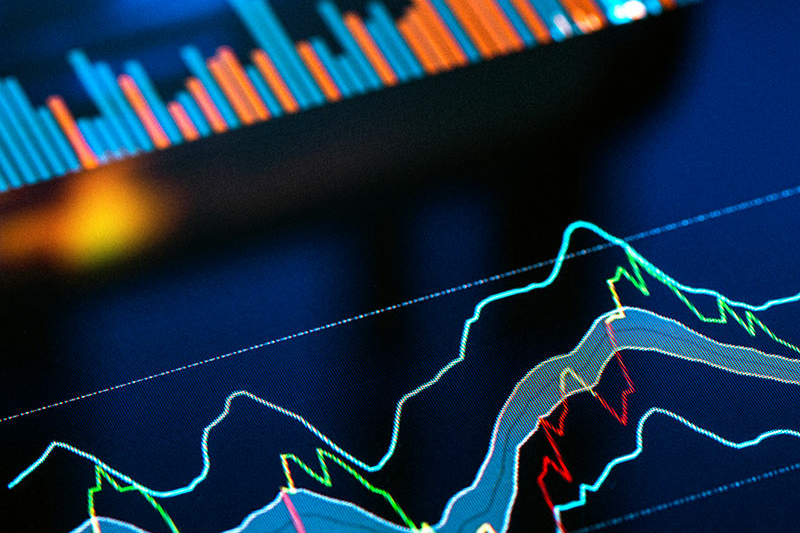US M&A settles back down
Deal value in the first half of 2022 could not match the record-breaking level of activity in 2021

US M&A deal levels remain robust, despite dropping from historic highs set in 2021
US M&A activity eased off in the first half of 2022 following an annus mirabilis for US M&A in 2021. Total value slipped to US$995.3 billion, a 29 percent year-on-year fall, though this is consistent with dollar volumes seen before the pandemic and so remains healthy by historic standards. Deal volume also fell, by 21 percent to 3,818 transactions. While this also remains above average, there was a material softening in the frequency of deals moving through Q2, which saw a quarter-on-quarter drop of 22 percent to levels last seen in Q1 2020, when the market was just beginning to recover from the initial shock of the pandemic.
A lot has happened this year to test acquirers’ nerves. Inflation concerns had already begun to set in before the war in Ukraine started. The conflict catalyzed further unease in capital markets as well as exacerbated supply chain troubles which have, in part, contributed to inflationary pressures. The S&P 500 officially entered a bear market in mid-June, and the Federal Reserve has embarked on a monetary tightening program to bring prices under control, leading to an increase in financing costs.
Regulations are another consideration. The SEC has taken the SPAC market to task, proposing accountability for deal parties and intermediaries for inflated projections. This type of transaction ground to a standstill in Q2 this year, as participants digested their risk exposure and the implications of the regulator’s proposals weighing on overall M&A volume. More recently we have seen some truly innovative SPAC structures that have the potential to re-stimulate interest in these deals.
For the most part, the US M&A market has stood up impressively to everything that has been thrown at it, which alone is solid grounds for optimism. Despite technology stocks being sold off heavily in equity markets, the sector has once again outperformed on the M&A front as companies and PE sponsors, who remain heavily armed with dry powder in spite of the more challenging deal financing conditions, continue to be attracted to innovation.
The fall in price-to-earnings ratios in the public markets and EBITDA multiples in private markets mean that, all else being equal, acquisitions are more attractive today than they were a year ago. Naturally, investors remain cautious as they closely watch how inflation plays out, the Fed response and the impact of those actions on underlying economic growth. However, the second half of 2022 has the potential to reclaim some of the confidence lost in recent months.
Deal value in the first half of 2022 could not match the record-breaking level of activity in 2021

Despite facing economic and regulatory hurdles in H1, PE dealmaking remains resilient, and looks set to reach its second-highest value on record

After a series of rollercoaster years for the SPAC market, investors and sponsors are finding ways to improve deal integrity


After a series of rollercoaster years for the SPAC market, investors and sponsors are finding ways to improve deal integrity
Explore the data
SPACs have never faced such a challenging environment, for a number of reasons. The overhang of the SEC’s proposed regulations regarding misleading financial projections have had a significant ripple effect. It is now extremely difficult to find banks willing to engage after they pulled back from the market almost overnight in late March. This has delayed deals as accountants come to terms with what information is required to be disclosed, and legal counsel now takes longer too. The due diligence bar has been set that much higher before a de-SPAC deal can be announced, stalling activity.
That’s the regulatory angle. Then there is the lack of risk appetite for these deals. There have been high levels of redemptions from retail investors once deal targets have been announced. Part of that is a function of the wider shift from high-growth risk assets with a distinct tech flavor, a favorite of SPACs, in favor of stable earners and commodities plays amid the economic slowdown and attendant bear market.
A number of high-profile SPAC deals have also fallen far short of expectations, which is what has prompted the SEC’s greater scrutiny. This means sponsors need more PIPE capital, which has been similarly unforthcoming, from institutional investors to close their deals.
However, the worst has possibly already passed for the SPAC market. Sponsors and banks have adopted a more cautious sentiment over the past three months since the SEC announced its proposal, but stakeholders are quickly adjusting.
One of the most exciting recent developments in the SPAC space is the deal innovation. A case in point, in July, FAST Acquisition Corp. II entered into an agreement to combine with Falcon’s Beyond, an entertainment development company specializing in intellectual property creation and expansion, in a de-SPAC transaction with a pro forma enterprise value of US$1 billion. The deal is noteworthy for introducing a unique structure whereby shareholders who do not redeem their shares will receive 50 percent of their shares as convertible preferred equity with a sizable 8 percent dividend and US$11 conversion price and 50 percent common stock. What’s more, 20 percent of the founder shares held by FAST II’s sponsor were forfeited and contributed to a bonus pool allocated to non-redeeming shareholders and PIPE investors, disincentivizing the deal’s abandonment.
This is just one example of how investors and sponsors have an abundance of options to improve the integrity of deals and ensure that they cross the finish line. Once the stock market finds its bottom and when there is greater regulatory clarity from the SEC, SPAC IPOs and de-SPAC activity should be in line for a recovery. It’s unlikely that the frenzy of Q1 2021 will be repeated, but there will be plenty of headroom for the US SPAC market’s growth as the interest rate cycle nears its end.
White & Case means the international legal practice comprising White & Case LLP, a New York State registered limited liability partnership, White & Case LLP, a limited liability partnership incorporated under English law and all other affiliated partnerships, companies and entities.
This article is prepared for the general information of interested persons. It is not, and does not attempt to be, comprehensive in nature. Due to the general nature of its content, it should not be regarded as legal advice.
© 2022 White & Case LLP